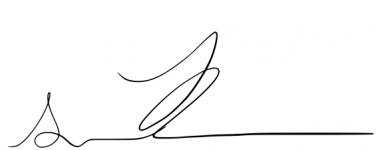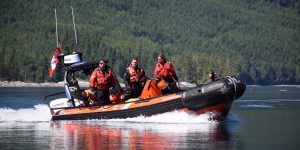I've spent the last two summers on the BC Coast at a Canadian Coast Guard rescue station. As a crew member on a lifeboat, everyone has to work in tandem to get the job done - which often means coming to the rescue of a vessel in distress. At my first rescue station, in little Kelsey Bay, British Columbia - north of Campbell River on the Johnstone Strait, one rescue has always stood out to me. We were woken up by radio traffic around 2 o'clock in the morning. From what we gathered, two boats tied together had lost power and started taking on water somewhere nearby. Onboard were two people, two cats, and a dog. As we monitored the situation, a frantic voice came over the radio; "MAYDAY, MAYDA-" before cutting out.
When on a rescue call, each of the three crew have important roles - helm operator, navigator, and lookout. For this run, I was at the helm. Working together with my crew, I operated our Coast Guard Zodiac in some of the worst weather I had experienced, with near-zero visibility, high winds, sideways rain and rough swell. I communicated with the navigator and lookout to steer the vessel on the correct course, allowing the navigator to use our searchlights to locate the stricken vessels. Once located, I maneuvered our rescue boat alongside the distressed mariners to allow them to climb on board our vessel, and allowing the lookout to hook up an emergency towline. I then towed both boats into safe harbour, and thanks to the crew's teamwork, all occupants were unharmed.


Working in SAR, it's important everyone can do their job perfectly and that the team dynamic is effective. Not only are you responsible for yourself, you may be responsible for someone's life on the water. The ability to communicate, function, and complete a task with a team, in a high-stress situation is a necessity for this kind of work, and undoubtedly translates to an ability to keep calm under pressure that can be applied across any type of work environment.